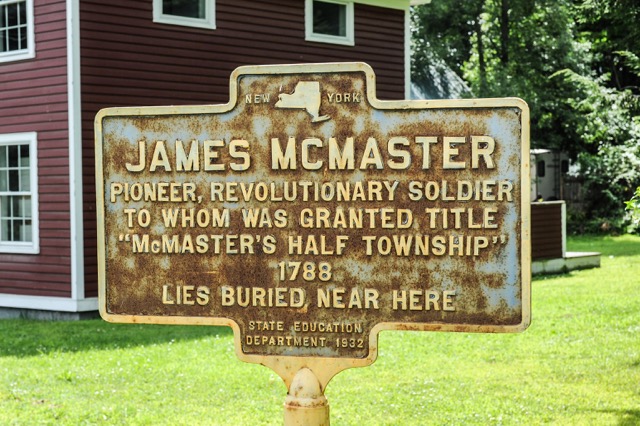In 1923, as a result of the Commissioner of Education asking the New York Historical Society to come up with suggestions to commemorate the 150th (sesquicentennial) anniversary of the Declaration of Independence that would be coming up in 1926, the historical marker program began. The markers were to designate sites that were of historical significance to its revolutionary or state history.
Plans were immediately made and funding would be provided by the State Education Department for as little as $2. To apply, an application form was required for the text, location and supporting historic documentation.
Due to the enormity of such a statewide project, it wasn’t until 1926 when they even began to implement it. The first few markers were erected by the Department of Transportation along state highways in 1929, but it wasn’t until 1932 that the project was finally in full swing. Because of the Great Depression and the creation of the Works Progress Administration, men from the WPA Writer’s Project were involved in researching and writing the text for them.
When the markers were first delivered they came unpainted and it was not unusual for the local sheriff to have a work crew of prisoners paint and install them. At first the color choice was green and gold before the blue and gold was unanimously preferred.
By 1939 funding for the roadside markers ran out until the early 1960s when the New York State Education Department decided to change from the smaller roadside markers and fund fewer, oversized ones with longer text. They were to be placed in rest areas or at scenic overlooks; but again, funding ran out and they were also discontinued.
By the late 1960s the State was encouraging communities to undertake their own local historic marker projects, using the smaller signs, but with private funding. They first suggested the communities use a different color and design than the State markers; however, the majority chose to opt for the standard blue and gold markers and design.
By then, the State Historic Trust by Conservation Law stated the markers could be for whatever the individual community chose to recognize as historic and or educational, not strictly connected to its revolutionary or state history as it did when it started in 1923.
By the 1970s the Office of State History networked with local government historians at the county and town levels and encouraged them to continue to erect historic markers. The State Education Department reviewed the proposals, but there was no funding. All they could give was advice and a letter of approval that was then sent to the foundry that cast the markers. The foundry required the letter of approval from the State office before it would accept an order and would often insert a credit line for the State Education Department on the marker for that reason. However, the markers could not be rightly considered “State” historic markers.
By 1972, the functions of the State Historic Trust passed to the Office of Parks, Recreation and Historic Preservation, but the same rules and language remained the same as when it was under the Education Department. As time passed, the state had less authority or control over local or private installations of historic markers.
Here in Tioga County, and when the Village of Owego prepared to celebrate its Bicentennial anniversary coming up in 1987, a Historic Marker Project Committee was chosen to erect or replace them. For the ones that were still standing, but needed refurbishing, Sheriff Ayers approved the use of the work release program for prisoners to remove, clean, repaint and to place them back on the poles with the assistance of the Department of Public Works.
The Chase Lincoln Bank funded the markers in the amount of $2,635. The Bicentennial committee originally wanted 12 of them, but because of rising costs, eight were selected.
Also, due to delays, only one marker, the Ithaca & Owego Railroad, was actually erected just before time ran out in November of 1987. The rest of them were installed the following year or later. Two of them had mistakes with dates and spelling and one was placed in the wrong location.
Currently, New York State does not manage a historical marker program. Their only responsibility is to oversee them if they are installed on state roads or land. Local authorities are responsible for their approval and installation when private funding is received, or through grants.



Be the first to comment on "Historical Marker History"